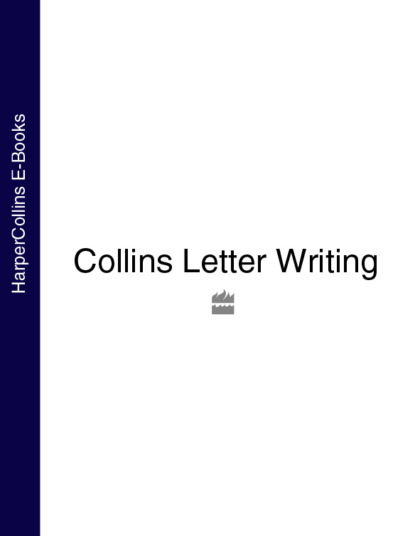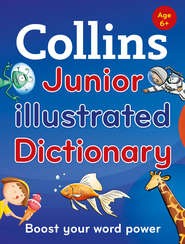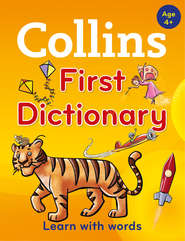По всем вопросам обращайтесь на: info@litportal.ru
(©) 2003-2025.
✖
Collins Letter Writing
Настройки чтения
Размер шрифта
Высота строк
Поля
Every letter should be dated.
Standard business practice is to leave a double-spaced gap after the recipient’s full address and then put the date directly below the address on the left-hand side of the page.
There are many correct ways to date a letter but the most common in business practice is to put the date in figures and then to write the month in letters with no extra punctuation. In other words, like this:
14 February 2003
Using figures only, i.e. 14/02/03, is perfectly valid but tends to look as if the letter has come straight out of a computer print-out and is rather inelegant. Adding ‘st’, ‘th’ or other such abbreviations after the number does not look very professional.
Adding ‘st’,‘th’ or other abbreviations after a date – ‘1st’ or ‘4th’ – never looks professional.
Personal correspondence is much more flexible. Using the same example, many people would write:
14th February, 2003
Note the addition of the ‘th’ after 14 and the comma after February, both of which make the date appear a bit more personalised and also traditional. Even in personal correspondence, however, it is probably a good idea to add the year.
PARAGRAPHS (#ulink_bd630b48-613b-561b-8bff-4427edb0b676)
A paragraph is composed of several sentences dealing with the same subject. In business terms, of course, much of your letter is going to be dealing with the same subject and one paragraph for a two-page document would be extremely difficult to read. Where you break your paragraphs should, therefore, be a matter of common sense.
The aim of letter writing is to convey information.
Generally speaking, a paragraph should not be more than about fifteen or twenty lines and, in most cases, much shorter than that. There are no fixed rules, but bear in mind that the point of a paragraph is clarity of expression and that short paragraphs are infinitely preferable to long ones.
Business letters tend to be ‘aligned left’ which means that all paragraphs start on the left-hand side of the page and none are indented. This gives a clean, neat look and appears businesslike. When preparing semi-professional letters – to a school head teacher, for example – it may be appropriate to indent the first line of each paragraph since this is a throwback to handwritten letter style and might seem more elegant.
Handwritten letters almost always indent at the beginning of each paragraph on the basis that anything that makes handwriting easier to read is a good thing.
The rest of the layout will depend on the length of your letter. Most of us have received letters which begin at the top corner of the page and then fill the entire blank space with no margins and hardly any paragraphs. This is not going to facilitate the reading of your letter.
LAYOUT (#ulink_64328cdc-0a0b-58bc-802a-6227122ff653)
The purpose of good layout is to make your letter clear to read and, if possible, attractive to look at. It will look most presentable if it is well spaced on the page, with approximately 2cm of margin space all around the letter, although the bottom margin should be slightly wider than that at the top of the page. If the letter is short on text, try using double-spaced lines. This avoids the page looking bald. On the other hand, if the letter is very long, it may run down to the bottom of the page, leaving you barely enough room for your signature. This also looks unprofessional. Try to avoid this by leaving less space between the address and the date, or by leaving more space at the foot of the page and then running a whole paragraph on to another page. Having just a few lines on a continuation sheet is clearly daft.
FOOTNOTES AND POSTSCRIPTS
Before you sign your letter, do make sure that it includes everything you have in mind. A PS can always be added as an afterthought, although, with word-processing today, it should hardly be necessary. If you do add a PS (or ‘postscript’, which derives from the Latin for ‘after the writing’), bear in mind that it might well be the most instantly eye-catching item on the page, so make sure that what you say in it is of note. If you have thought carefully about your letter beforehand, you should not really need to use the PS.
Use a PS only where really necessary.
Footnotes, on the other hand, are really designed for use in academic or technical writing. They may help to shed extra light on some part of the text which, if explained within the text itself, would destroy the natural flow of the basic argument. They are most often used to explain the sources of quotations or factual information – explanations which would not fit within the text itself.
EXAMPLE
Having visited many more rooms than could be supposed to be of any other use than to contribute to the window tax,1 and find employment for the housemaids, ‘Now,’ said Mrs Rushworth, ‘we are coming to the chapel, which properly we ought to enter from above, and look down upon; but as we are quite among friends, I will take you in this way, if you will excuse me.’
They entered. Fanny’s imagination had prepared her for something grander than a mere spacious, oblong room, fitted up for the purpose of devotion . . . ‘I am disappointed,’ said she, in a low voice, to Edmund. ‘This is not my idea of a chapel. There is nothing awful here, nothing melancholy, nothing grand. Here are no aisles, no arches, no inscriptions, no banners. No banners, cousin, to be “blown by the night wind of Heaven.” No signs that a “Scottish monarch sleeps below”.’ 2
Jane Austen, Mansfield Park (1814)
1 window tax. A tax first levied in England in 1696 ‘for the purpose of defraying the expenses and making up the deficiency arising from clipped and defaced coinage in the recoinage of silver during the reign of William III’ (Encyclopaedia Britannica). Nearly all inhabited houses were assessed at two shillings a year and tax was added according to the number of windows. The tax was repealed in 1851.
2 blown by the night wind of Heaven and Scottish monarch sleeps below. These are quotations from Sir Walter Scott’s The Lay of the Last Minstrel, which was his first important original work.
TITLES (#ulink_6e0a7e99-62ca-527d-891d-2e0ee032b457)
Even in the 21st century, it is courteous to address people correctly. It is less important to get this right than it used to be and nobody is going to think less of you for making a minor slip of titular etiquette. Nevertheless, it is still important to try to get this right.
As a general guideline, the most common title is ‘Sir’. This is granted to knights and baronets and, unless you are on first-name terms with them, the correct form of address would be ‘Dear Sir Bob’. Sir Bob’s wife, on the other hand, would be addressed as ‘Dear Lady Charlton’ and this would also be her title if she was a peer in her own right.
Bob and Jane Charlton’s children should be referred to as ‘The Honourable Lancelot and Lucretia’ on an envelope but as ‘Mr’ or ‘Miss Family Name’ in the letter itself.
A Dame is a woman who has been granted a life peerage. She is not addressed as ‘Lady’ but as ‘Dame’, hence, ‘Dame Judi Dench’. The next highest rank before a peerage is a baronet and this fellow would also be ‘Sir Bob’.
UNTITLED
MAN Dear Sir, or Dear Mr WOMAN Dear Madam, Mrs, Miss or Ms CHILDREN Dear First Name
RELIGIOUS
ARCHBISHOP My Lord Archbishop BISHOP My Lord Bishop DEAN Very Revd Sir CLERGY Revd Sir
OTHER PROFESSIONALS
JUDGE Sir or Madam PRIVY COUNCILLORS Sir or Madam
MEMBERS OF PARLIAMENT Sir or Madam
DOCTOR Dear Dr SURGEON Dear Mr or Ms
TITLED
DUKE Dear Duke DUCHESS Dear Duchess
MARQUIS Dear Lord X MARCHIONESS Dear Lady X
EARL Dear Lord COUNTESS Dear Lady
VISCOUNT Dear Lord VISCOUNTESS Dear Lady
BARON Dear Lord BARONESS Dear Lady or Dear Baroness
BARONET Dear Lord BARONET’S WIFE Dear Lady
KNIGHT Sir KNIGHT’S WIFE Madam
ILLUSTRATION 4 This basic chart shows how to address people who have specific titles. (For a more complete list of correct styles of address, see the appendix on p.238











